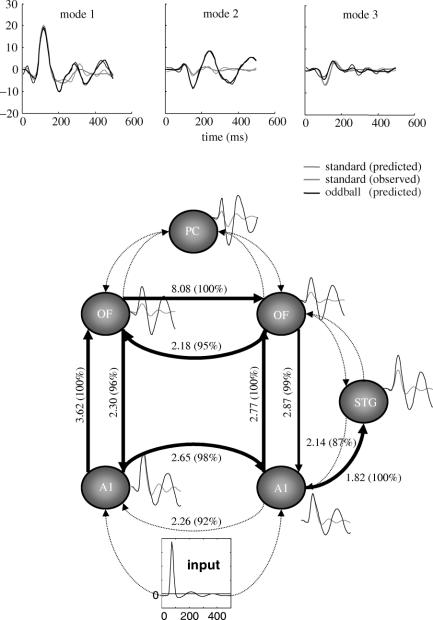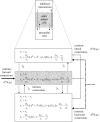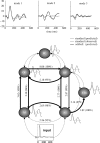
| PMC full text: | Published online 2005 Apr 29. doi: 10.1098/rstb.2005.1622
|
Figure 8

Auditory oddball paradigm: DCM results for the FBL model of the previous figure. Upper panel: the data are the projection of the original scalp time-series onto the three first spatial modes or eigenvectors. Note the correspondence between the measured ERPs (thin lines) and those generated by the model (thick lines). Lower panel: the response of each source is shown for the standard (grey) and oddball (black) trials based on the conditional expectation of the DCM parameters. Changes in coupling are shown alongside each connection in terms of the relative strength (oddball to standard). The percentages refer to the conditional confidence this change is non-zero (i.e. a relative strength of more than one). Changes with over 95% confidence are shown as solid lines. A1, primary auditory cortex; OF, orbitofrontal cortex; PC, posterior cingulate cortex; STG, superior temporal gyrus.







